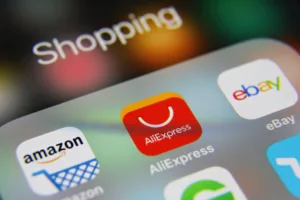by Jason Smith, VP at MoEngage
Peak trading season often leads to retailers focusing more on acquiring new customers and taking their focus off existing customers, particularly loyal ones with whom they already have good relationships. The result of this single-minded focus on acquisition risks losing the opportunity to retain and build a loyal customer base, and a resilient, sustainable business. To achieve this goal of an all-year-round sustainable business means putting in place strategies that will serve brands well beyond the Golden Quarter, and hopefully even smooth out some of the spikes and troughs in demand throughout the subsequent year.
Making changes for the long term that serve the business during peak season and beyond starts with knowing the market, and this was a key challenge discussed in our recent webinar. For instance, recent research shows that 24% of consumers had already finished their peak season shopping in October because they wanted to take advantage of early-bird discounts now and not risk paying higher prices later on. At the same time, several shoppers look like they will hold out for bargains much later, spending time looking for high-value bargains and hesitating until they see what is the perfect product at the perfect price.
This means that many of the once reliable indicators of shoppers’ behaviour are no longer in play. Consumers now think differently about when, where, and how many channels they spend time researching.
Another emerging behaviour that retailers need to be aware of is the number of people who look for personalised recommendations before they buy, particularly the under-35s. However, it is very common for retailers to miss the opportunities afforded by product recommendations. For instance, it’s not uncommon for a customer to receive a recommendation for a product that they have just already purchased or a recommendation for a product that they would never dream of buying. Therefore, understanding where the customer is on their shopping journey is important. It makes no sense to start offering hard discounts to a customer who is already on their discovery journey and may well be at the point where they would appreciate more information about a product rather than the discount.
Knowing how they like to shop is also important because, while the product and its price are key factors, it is also crucial to consider how the customer likes to have their purchases fulfilled, where they want them delivered, how and so on. And so, making good on these promises is more likely to lead to a sale. This needs to be backed up with regular transactional messaging so these customers know what to expect – if delivery is going to be late, better to own up and tell the customer rather than keep quiet and hope for the best.
It is also important to know who is actually going to use the product, because, particularly during peak season, more and more people are buying gifts for other people. This is a perfect opportunity for the retailer to communicate with the recipient of the gift with advice on how to use the product, a tactic that can lead to engagement of that user as a customer.
Journey based personalisation
Knowing all of these things about the market in general and about customers in particular should bring about a change in the way that retailers sell. Rather than defaulting to deep discounts, they can vary their offer to different customer cohorts based on their individual preferences. For instance, simply offering immediate discounts to loyal customers when free loyalty points might well work better makes much more sense. Or offering deep discounts to serial returners who are not loyal customers is also another way to give away margin, when perhaps the best strategy would be to start charging for returns or even exit those customers and stop selling to them altogether. Put simply: using insights about your customers to inform discounting means offers become more compelling to individual shoppers, while margin is protected.
And this customer insight should also lead to a more intelligent use of sales and promotional tactics according to the unique needs of each channel. Of course, each channel has to work well on its own, but it must also get the experience right for those people who move between different channels. It may well be possible to nudge people from one channel where they are not converting to another where they might start to. It’s a question of balance, providing consistency in terms of how the brand is promoted, but allowing each channel to play to its strengths in terms of how it sells and communicates with the customer.
A good example of this is social media. As brands try to increase their presence on these media, it is worth considering that it might be better to promote the brand rather than try to sell. Retailers can then start to personalise better based on engagement.
Lastly, it is important to check that the retailer has the tools and the data sets that they need in order to achieve all of these things. Many retailers are already using conventional artificial intelligence (AI) but now generative AI (Gen AI) is enabling them to create content much more quickly to catch opportunities on the fly and build campaigns in minutes rather than hours or days.
Leveraging Gen AI to achieve ‘journey’ based personalisation and engagement, the gold standard in driving marketing performance, allows brands to curate flexible, multi-step customer journeys. These then send out various message versions across different channels and at different times based on what the customer’s lifecycle stage is. Research in our 2023 Email Marketing Benchmarks Report found that, on average, European retailers that leveraged ‘journey-based’ personalisation were found to improve conversion rates by +9.6-fold. And, in the context of peak trading, because of the feedback that retailers get from the data they can start to create customer journeys and then act on the results that they get, this provides huge opportunities beyond peak season for engagement throughout the year.
Price, of course, remains an important element in the pitch to consumers, but given the number of channels now available to retailers and both the software tools and data that they have available, they can start to pursue a much more layered strategy that enables them to respond to each type of customer and each type of territory, given how much fragmentation there has been in their behaviours over the last few years.
For more information on this topic from real users, listen to the webinar: No-Fuss Strategies- How to Retain Holiday Shoppers (wistia.com)






